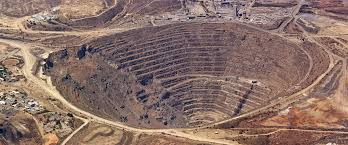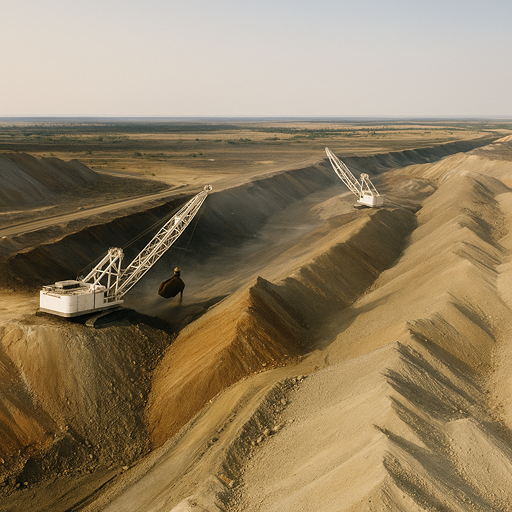Federal Approval Granted for Major Arizona Copper Mine Expansion
After years of environmental review and community consultation, federal agencies have granted final approval for a significant expansion of copper mining operations in southeastern Arizona, paving the way for increased domestic production of this critical metal.
Project Overview
The expansion involves the development of an underground copper mine near the existing operations, utilizing modern mining methods that minimize surface disruption. The project, valued at $1.9 billion, will extend the mine life by 25 years and significantly increase annual copper production.
The approved plan includes:
- Underground block cave mining method
- Modern processing facility with advanced environmental controls
- Dry stack tailings storage (eliminating traditional tailings ponds)
- On-site solar power generation to reduce emissions
- Comprehensive water recycling system (85% recirculation rate)
Economic Impact
The project promises substantial economic benefits to Arizona and the broader U.S. economy:
Job Creation:
- 1,500 construction jobs over 4-year build period
- 500 permanent operational jobs with average salary of $85,000
- Additional 1,200 indirect jobs in supporting industries
- Priority hiring for local residents and Native American communities
Economic Contribution:
- $400 million in direct economic activity annually
- $150 million in tax revenue over project lifetime
- $50 million in local procurement and contracts
Environmental Considerations
The approval came after one of the most comprehensive environmental reviews in recent mining history, spanning seven years and involving multiple federal, state, and local agencies.
Key Environmental Protections:
Water Management: The project includes state-of-the-art water management systems. All process water will be recycled, and the mine will not draw from the Colorado River system—a critical consideration in drought-prone Arizona.
Wildlife Protection: Extensive surveys identified habitat for several protected species. The project includes:
- Protection of 5,000 acres of critical wildlife habitat
- Wildlife corridors maintained around mining areas
- Restoration of 2,000 acres of degraded habitat elsewhere
- Ongoing monitoring programs for endangered species
Air Quality: Emissions controls exceed federal requirements, and the project commits to achieving carbon neutrality by 2035 through renewable energy use and carbon offsets.
Community Response
Local reaction has been mixed but generally positive:
Supporters, including local business organizations and labor unions, emphasize economic benefits and the importance of domestic copper production. "This project will revitalize our local economy while meeting the highest environmental standards," said Barbara Martinez, Mayor of nearby Superior, Arizona.
Environmental groups that initially opposed the project have acknowledged improvements made during the review process. "While we had concerns, the company and regulators addressed many of them. The dry stack tailings approach is particularly significant," said James Wilson of the Arizona Conservation Alliance.
Technology and Innovation
The mine will incorporate cutting-edge mining technology:
- Autonomous Vehicles: Self-driving trucks and loaders for increased safety and efficiency
- Real-time Monitoring: Comprehensive sensor networks tracking environmental parameters
- Precision Blasting: Computer-controlled blasting minimizes vibration and waste rock
- AI Optimization: Machine learning algorithms optimize ore processing and energy use
Strategic Importance
The approval comes at a crucial time for U.S. copper supply:
Copper is essential for electric vehicles (each EV uses 80+ kg of copper), renewable energy systems, and 5G infrastructure. Current U.S. production meets less than 40% of domestic demand, with the remainder imported.
"Domestic copper production is a matter of economic and national security," said Deputy Secretary of the Interior Laura Chen. "This project helps secure our supply chains for the energy transition while maintaining strict environmental protections."
Native American Consultation
The project area holds cultural significance for several Native American tribes. Extensive consultation resulted in several important accommodations:
- Protection of 15 identified sacred sites
- Tribal monitoring during all ground-disturbing activities
- Employment and training programs for tribal members
- Revenue sharing agreements with affected tribes
Construction Timeline
With approvals in place, the project will proceed on the following schedule:
- 2026: Site preparation and infrastructure construction begins
- 2027-2028: Underground development and facility construction
- 2029: Equipment installation and testing
- 2030: Production ramp-up to full capacity
Industry Perspective
"This approval demonstrates that responsible mining can coexist with environmental protection," said Michael Foster, CEO of the operating company. "We're committed to being a model for modern mining practices and a valued community partner."
Industry observers note that the project's success in obtaining permits despite initial opposition could provide a template for other copper projects seeking approval across the western United States.
Looking Ahead
The Arizona expansion is one of several major copper projects in various stages of permitting across the U.S. If all proceed, domestic copper production could increase by 40% over the next decade, significantly improving supply chain security for the energy transition.
However, the lengthy approval process—seven years in this case—highlights ongoing challenges in balancing resource development with environmental protection and community concerns.




